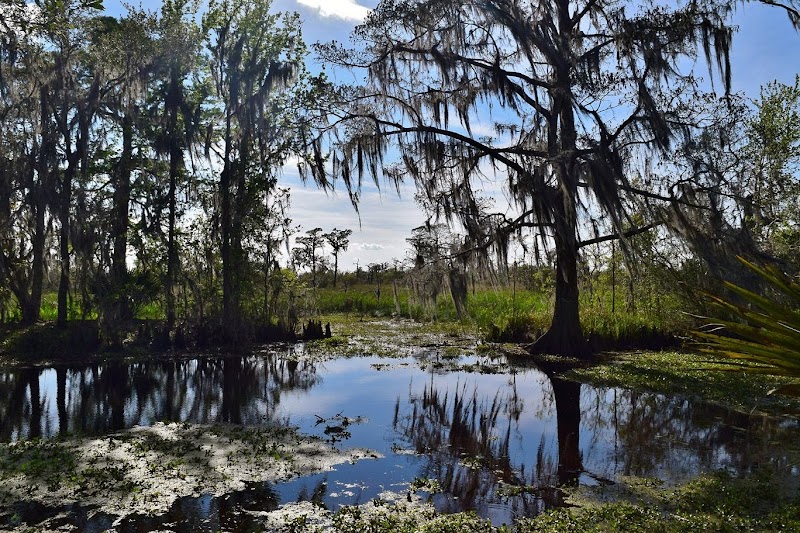
Discover Your Perfect Self-Guided Tour Near New Orleans: Adventure Awaits
Explore New Orleans on your terms with self-guided tours that combine cultural landmarks and outdoor adventures. This guide offers the essentials to plan your personalized journey through historic streets and natural beauty just beyond the city.
Start Early to Avoid Heat
Begin your tour in the morning to beat New Orleans’ humid afternoons. Cooler temperatures and softer light make for a more comfortable and photogenic outing.
Bring Durable Footwear
Expect a mix of paved streets, cobblestones, and natural trails, so sturdy shoes with good grip are a must for stability and comfort.
Hydrate Throughout Your Tour
New Orleans’ climate can sap your energy quickly—carry water and drink regularly to stay energized, especially during active hikes or bike rides.
Use GPS-Enabled Maps
Download offline maps or use GPS apps designed for New Orleans self-guided tours to keep your route clear and discover hidden points of interest.
Discover Your Perfect Self-Guided Tour Near New Orleans: Adventure Awaits
Looking for an immersive self-guided tour near New Orleans that blends rich culture with vibrant outdoor exploration? The New Orleans area offers a unique opportunity to explore at your own pace, from historic neighborhoods to scenic parklands and natural waterways. With a focus on flexibility and discovery, these self-guided tours allow you to map your own course through the city’s distinctive architecture, buzzing street life, and nearby wetlands.
Set off through iconic French Quarter streets or quieter, verdant pathways in City Park. The experience is yours to shape — walk, bike, or paddle on your schedule. Self-guided tours in New Orleans prioritize independence while connecting you to landmarks like Jackson Square, Bayou St. John, and Audubon Park’s leafy trails. They perfectly suit travelers who treasure spontaneity and personalized itineraries.
Practical guidance is key: many routes provide downloadable maps or smartphone apps with GPS, cultural insights, and local tips. Whether you choose a historic walking tour highlighting architecture and folklore or a nature-focused trek through Orleans’ adjacent parks and bayous, preparation is essential. Expect uneven sidewalks, occasional crowds, and humid weather — durable footwear, hydration, and early starts enhance your experience.
Keyword-rich phrases relevant here include "self-guided tour near New Orleans," "New Orleans outdoor exploration," "French Quarter walking route," and "bayou nature trail near New Orleans." Each phrase reflects how adventurers search to combine cultural immersion with outdoor activity. The area’s blend of urban charm and natural beauty supports keywords like "historic walking tour New Orleans," "New Orleans bike tours self-guided," and "day trips from New Orleans outdoor." These terms connect seekers to flexible experiences that valorize independence while soaking in southern landscapes.
Explore at your own pace, equipped with insights and routes designed for independent travel. New Orleans encourages engagement with its fiercely distinct atmosphere—whether streets pulse underfoot or wetlands sway beside you. This self-guided approach invites all fitness levels to encounter the city and its surroundings on their own terms, where every step brings new angles and stories.
Nearby Trips
All Adventures
Boat Charters
Water Activities
Adventures near New Orleans, Louisiana
Discover the unique and memorable adventures that make New Orleans, Louisiana special.
Frequently Asked Questions
What are the best neighborhoods to explore on a self-guided tour near New Orleans?
The French Quarter offers vibrant culture and architecture, while the Garden District showcases historic mansions and leafy streets. For nature, City Park and Audubon Park provide trails and bayou access ideal for outdoor walks.
Is it safe to explore alone on a self-guided tour in New Orleans?
Yes, but stay aware of your surroundings, especially after dark. Stick to well-trafficked routes and use GPS-enabled maps to remain oriented. Most daytime self-guided tours through popular neighborhoods and parks are considered safe for solo travelers.
What wildlife can I expect to see near New Orleans during these tours?
Look for herons, egrets, and turtles near waterways, and listen for songbirds in parks. The wetlands and bayous often host raccoons and occasionally river otters that add to the vibrant local ecosystem.
How accessible are the self-guided tours for families or casual walkers?
Many routes are family-friendly with mostly flat terrain and short distances. Choose tours through city parks or historical neighborhoods for easier paths suited to all ages.
Are digital guides or maps recommended for these tours?
Absolutely. Many providers offer downloadable maps and smartphone apps with GPS and multimedia guides, enriching the experience and helping with navigation.
What are some lesser-known natural viewpoints near New Orleans to visit during a self-guided tour?
Bayou St. John’s eastern edge offers quiet water vistas rarely crowded with tourists, and the back trails of City Park reveal thick canopies and small ponds perfect for moments of serene reflection.
Recommended Gear
Comfortable Walking Shoes
Supportive shoes with good sole grip to handle varied terrain including city pavements and forested paths.
Reusable Water Bottle
Hydration is critical in New Orleans’ humid climate, especially for summer outings.
Light Rain Jacket
Spring showers come fast and hard—carry lightweight protection to stay dry without overheating.
GPS or Smartphone with Offline Maps
Essential for navigating self-guided routes and locating hidden neighborhood gems.
Local Insights
Hidden Gems
- "The serene paths of Bayou Sauvage National Wildlife Refuge"
- "Hidden courtyards behind French Quarter buildings"
- "Quiet lakeside corners of City Park"
Wildlife
- "Great blue heron"
- "Louisiana black bear (in surrounding preserves)"
- "American alligator in outer wetlands"
History
"New Orleans’ layered history echoes through its streets—from French and Spanish colonial architecture to Creole and African American cultural influences still vivid in music and cuisine."